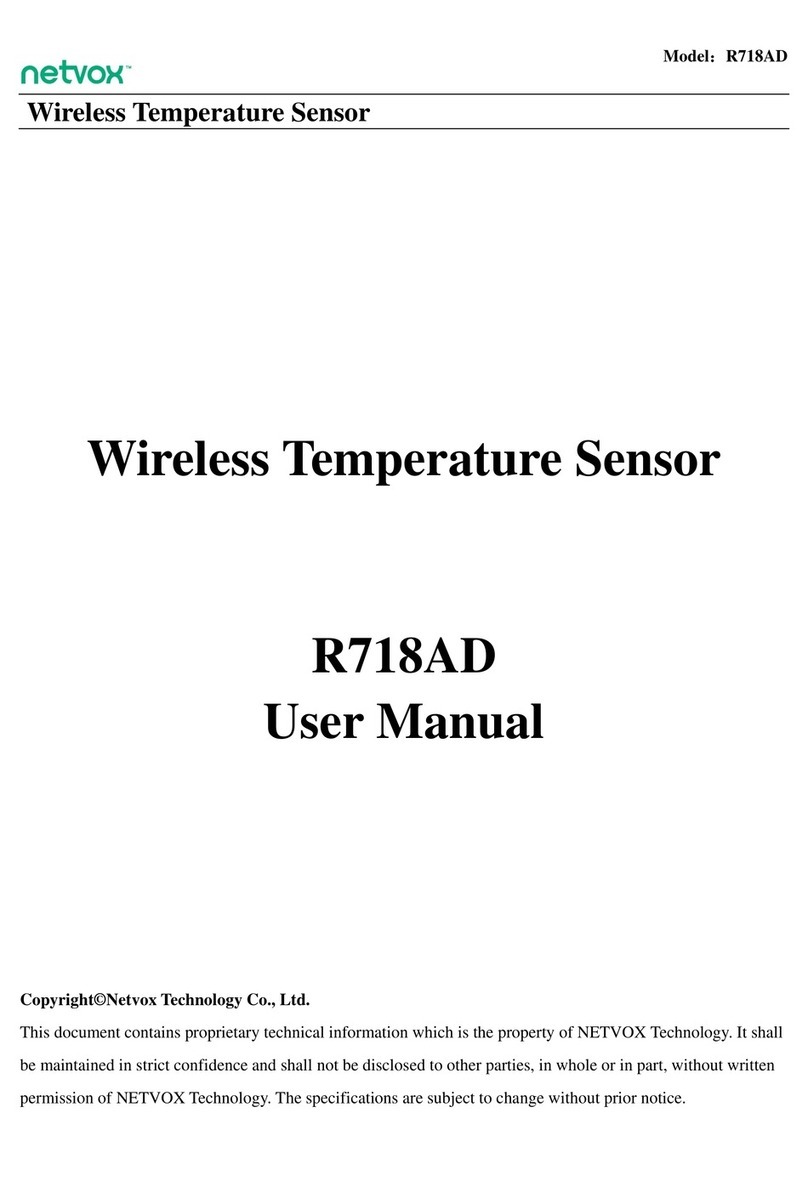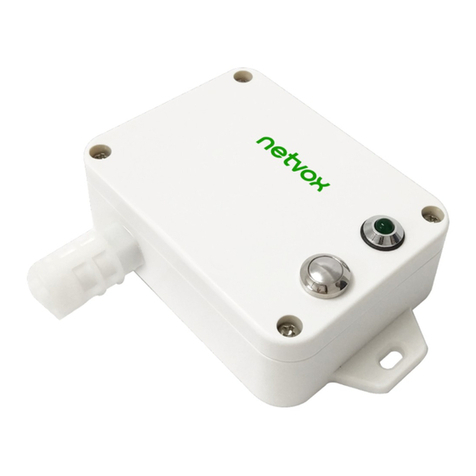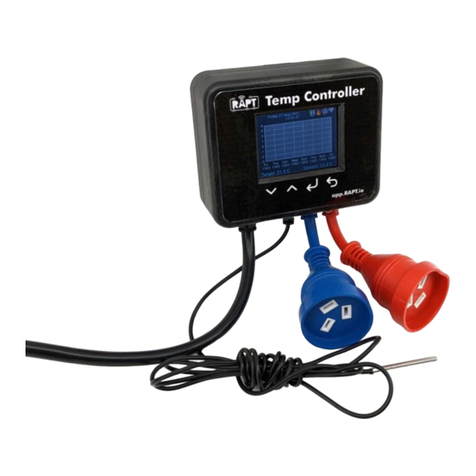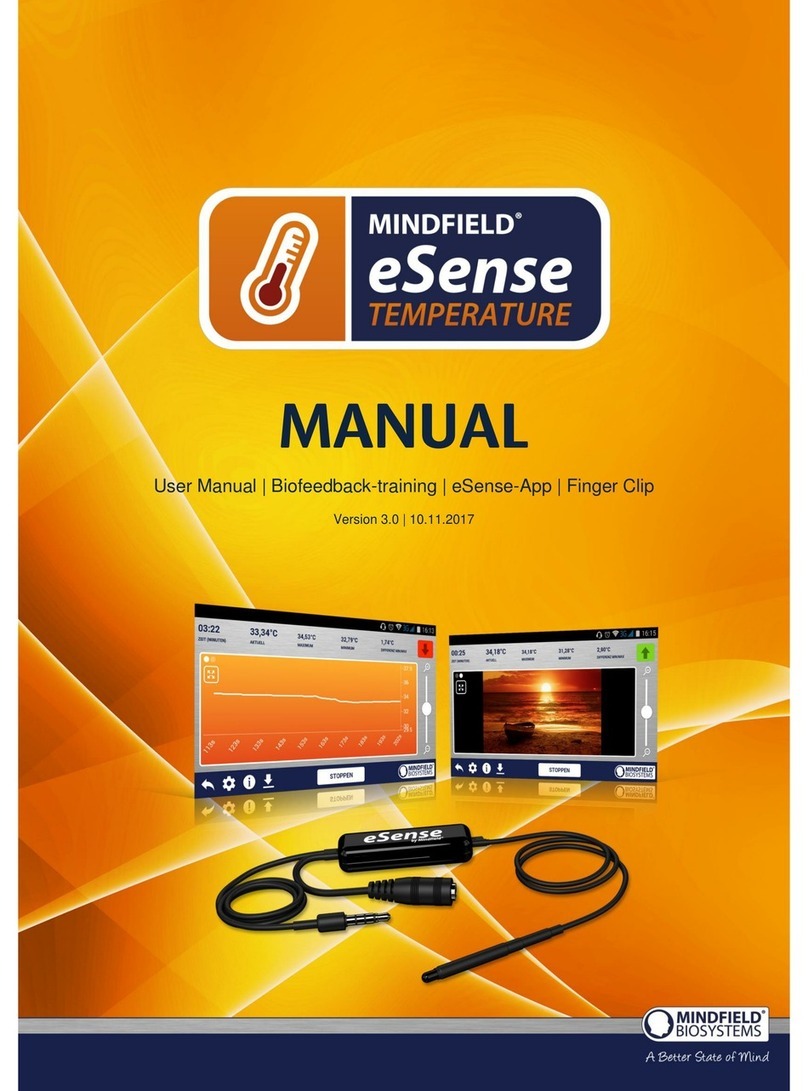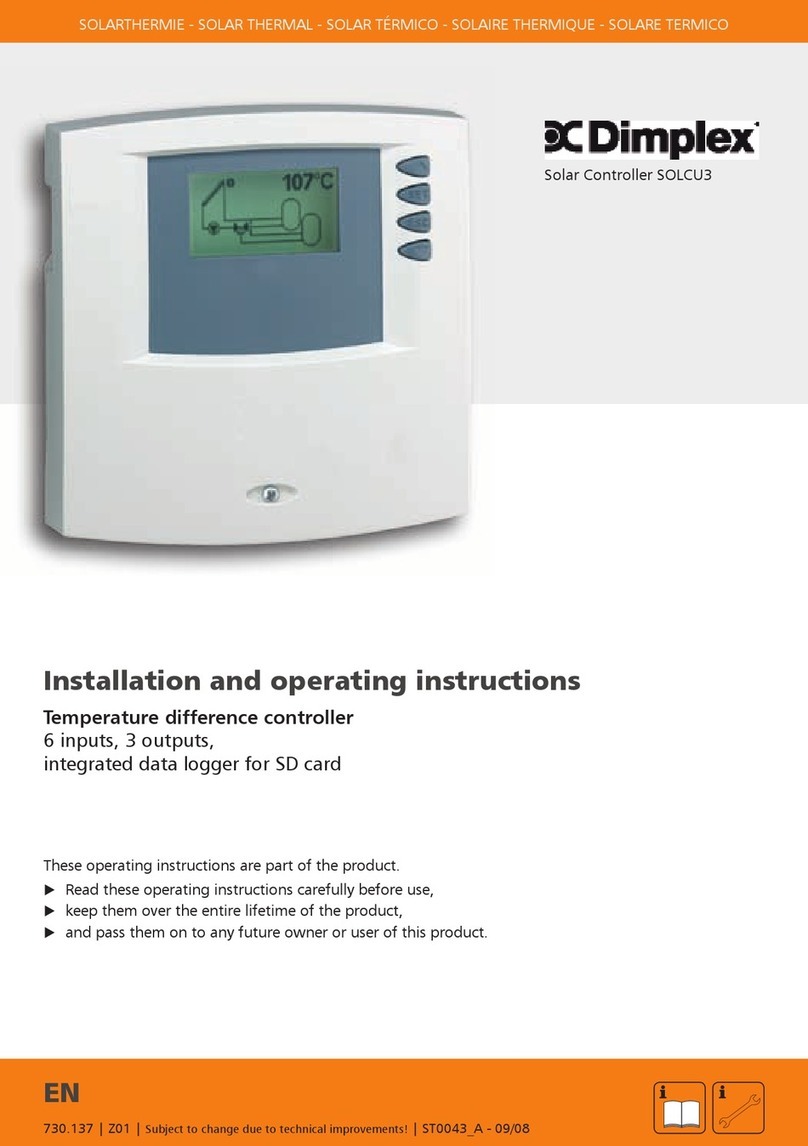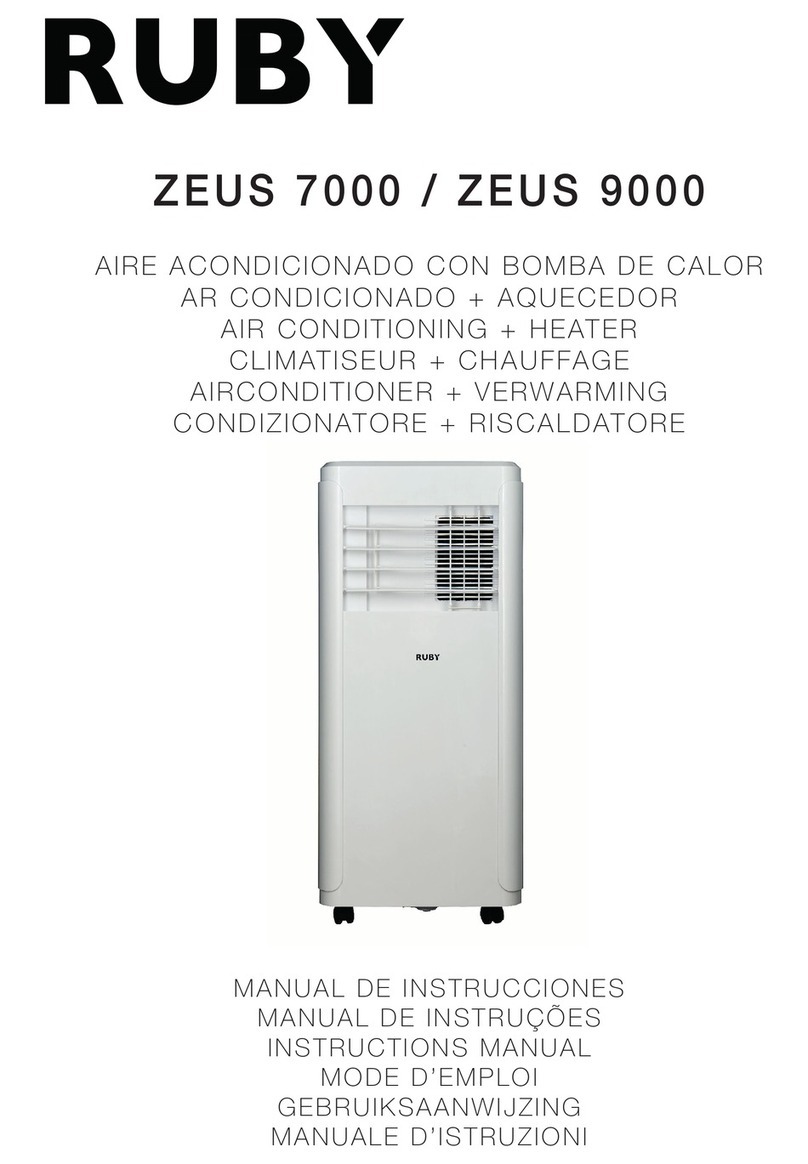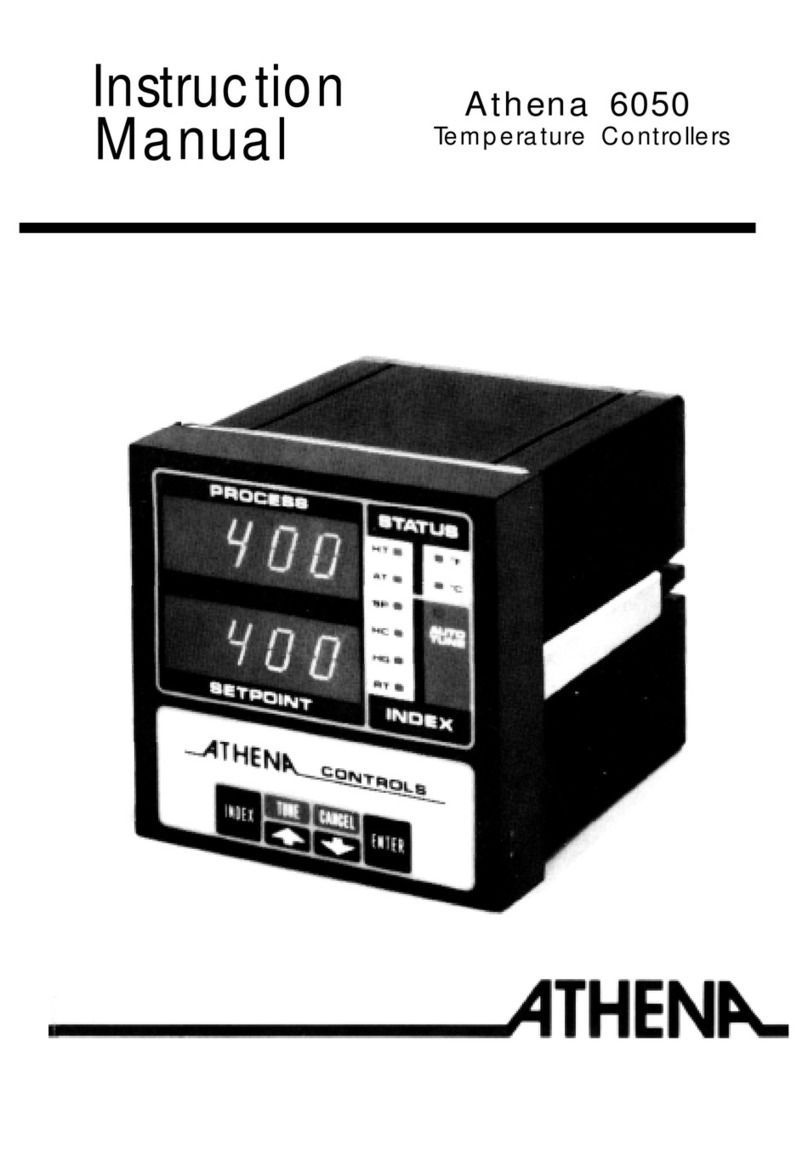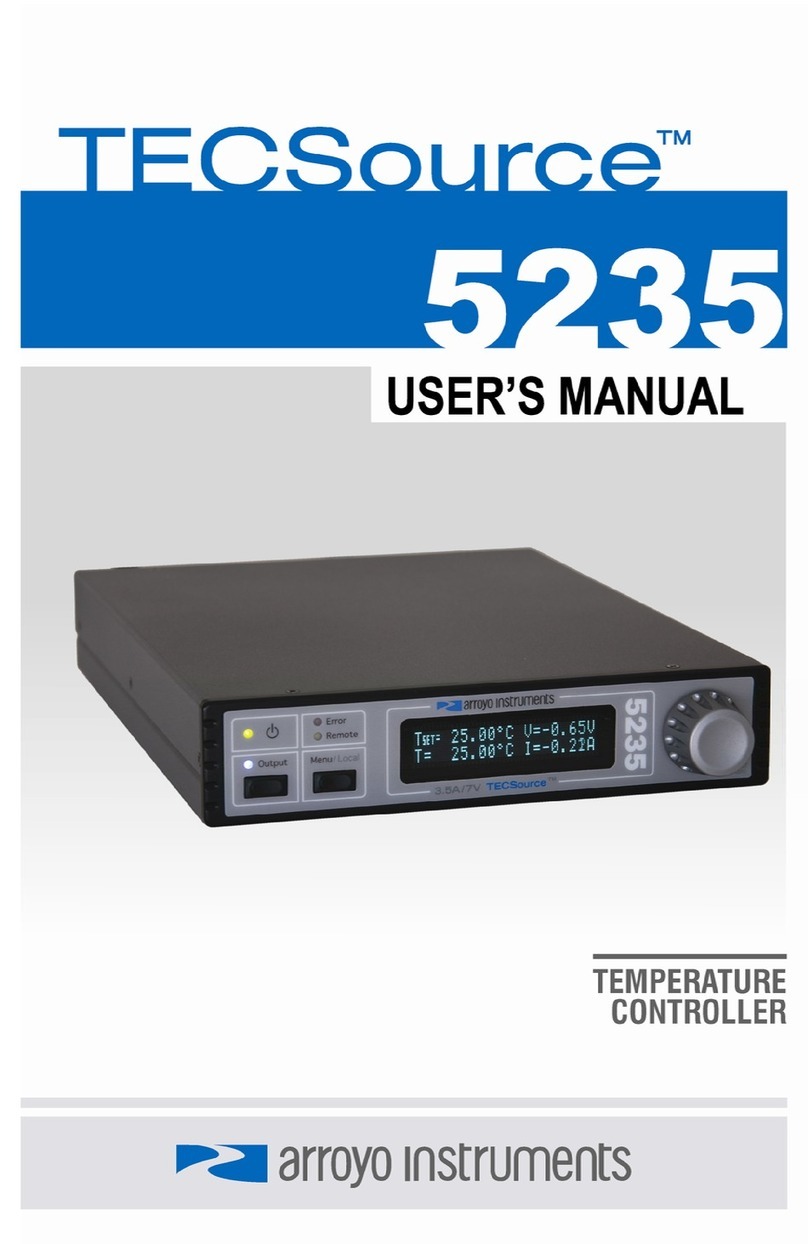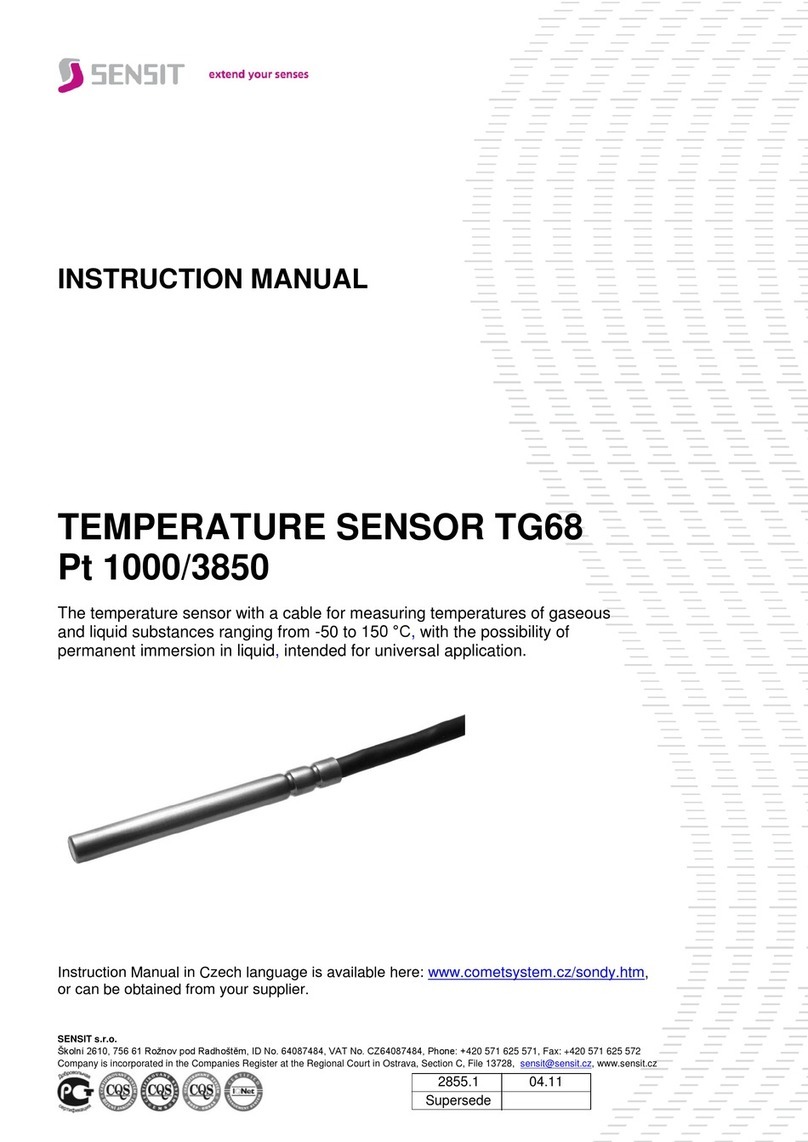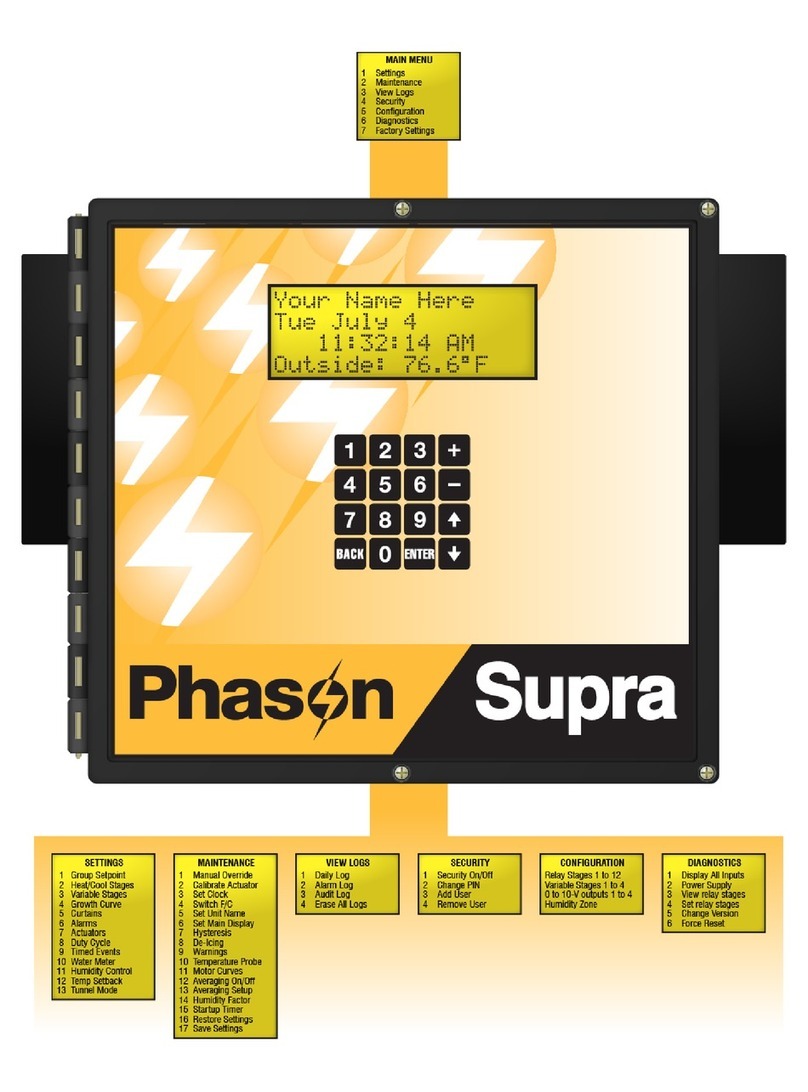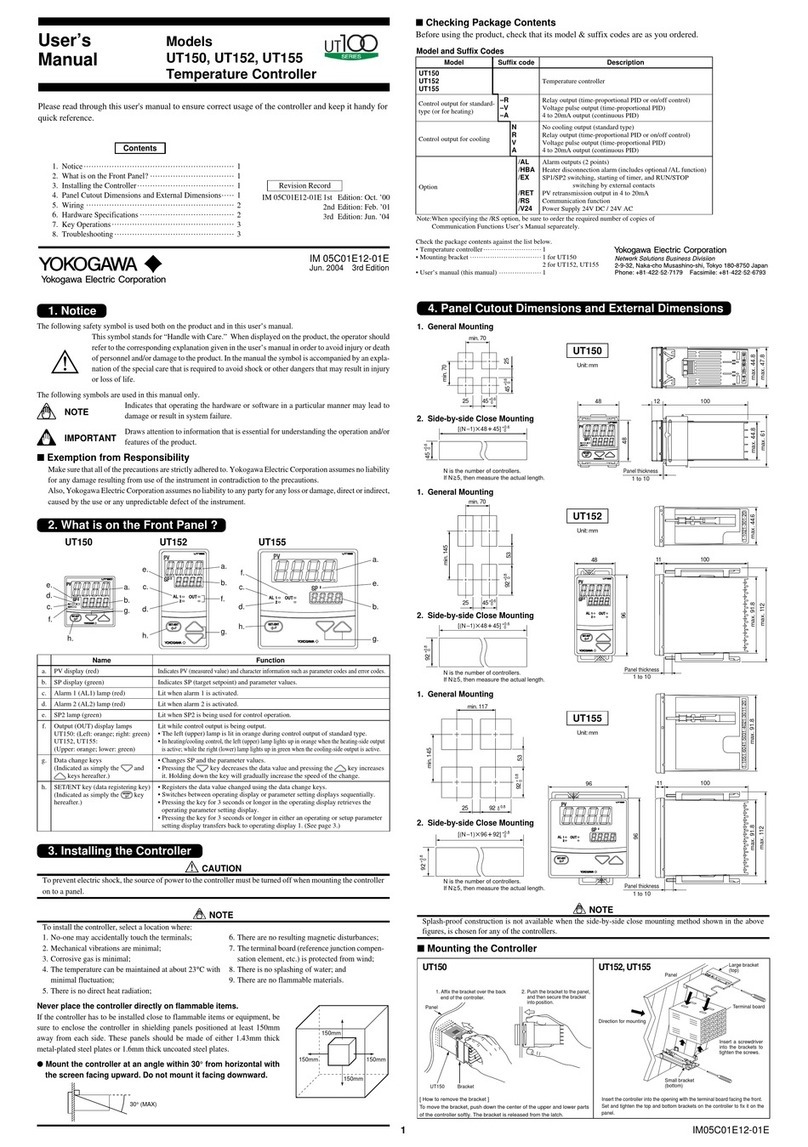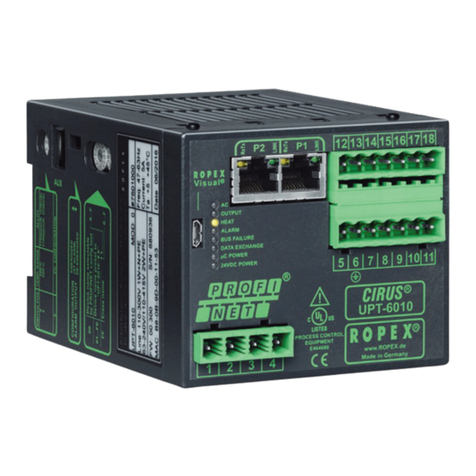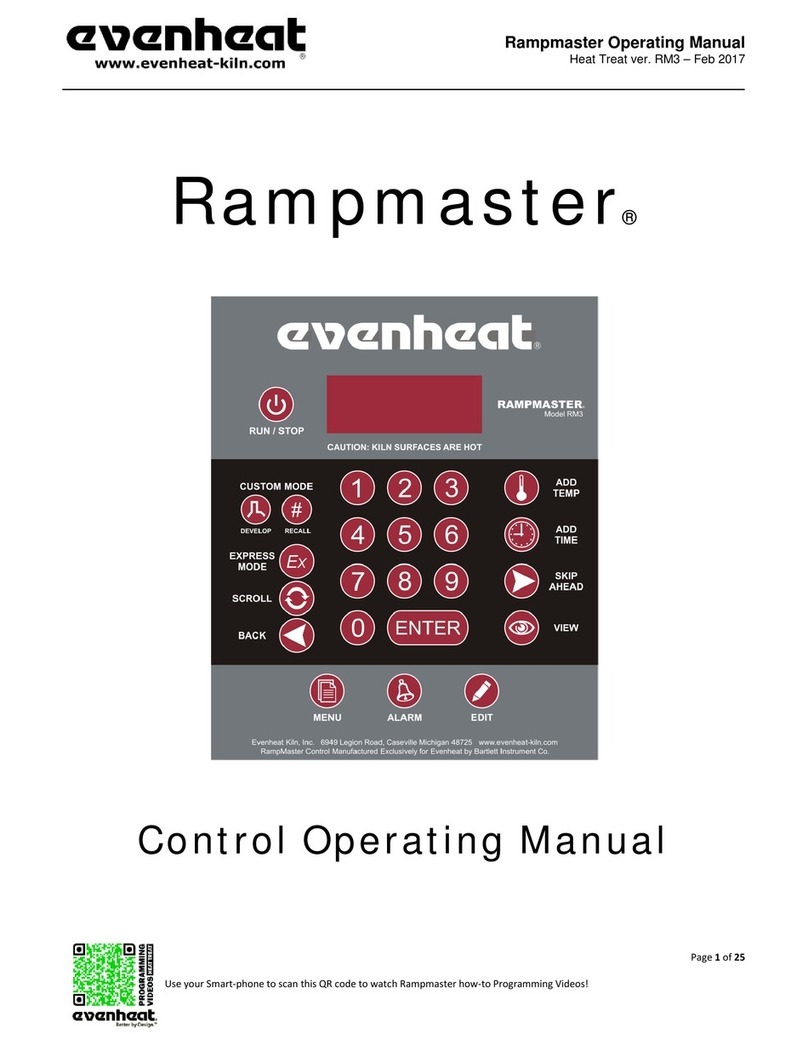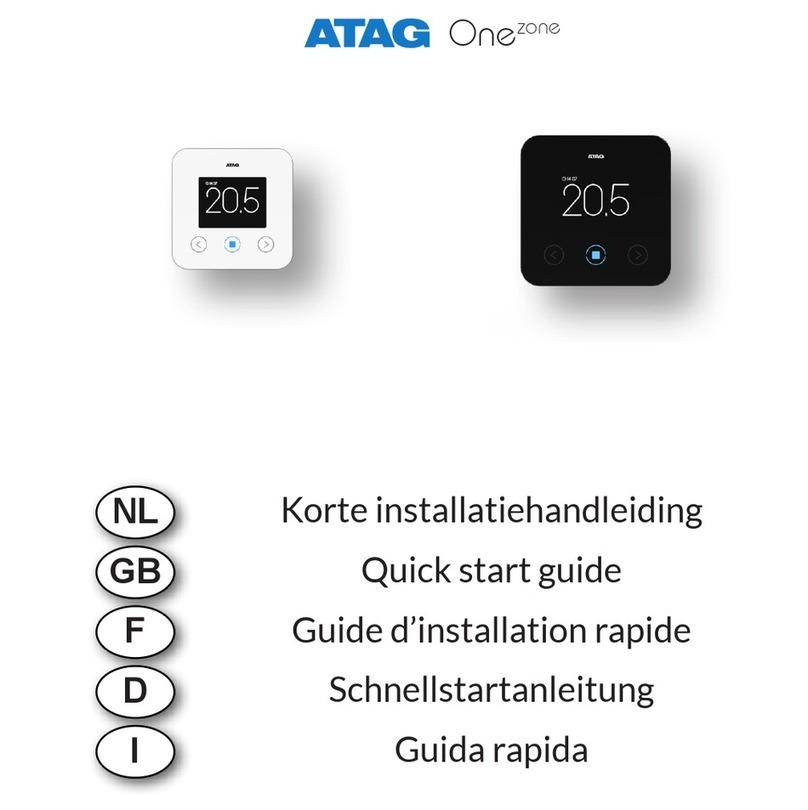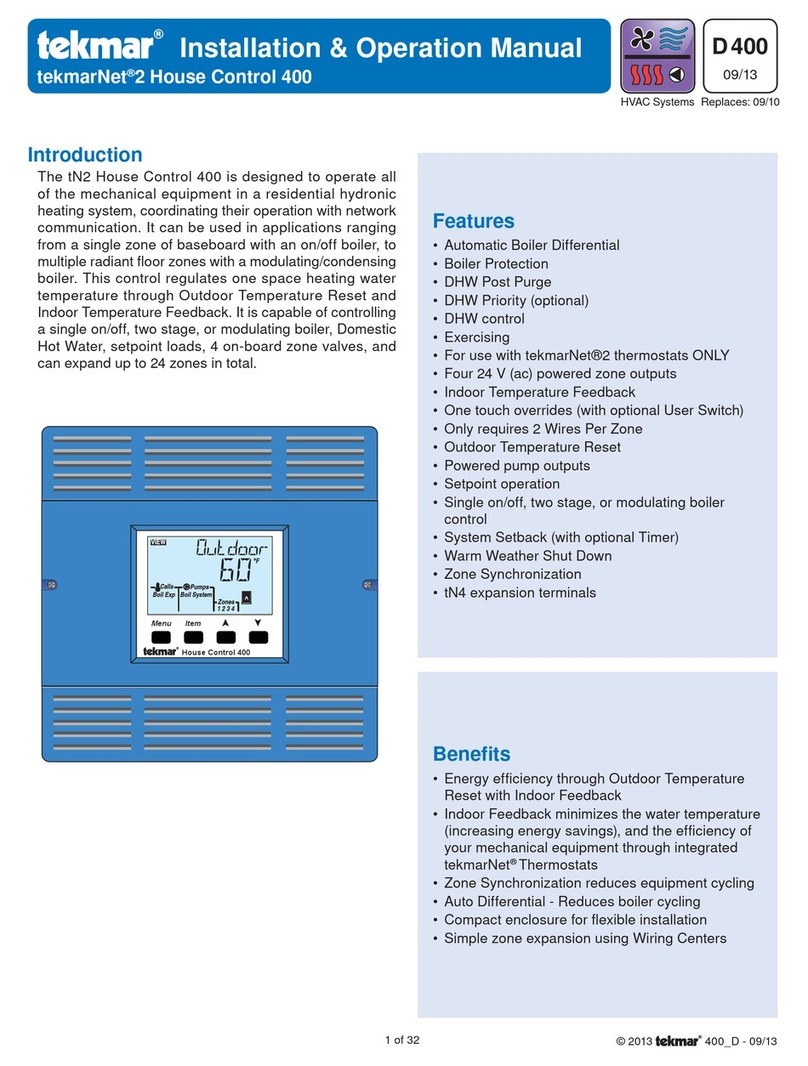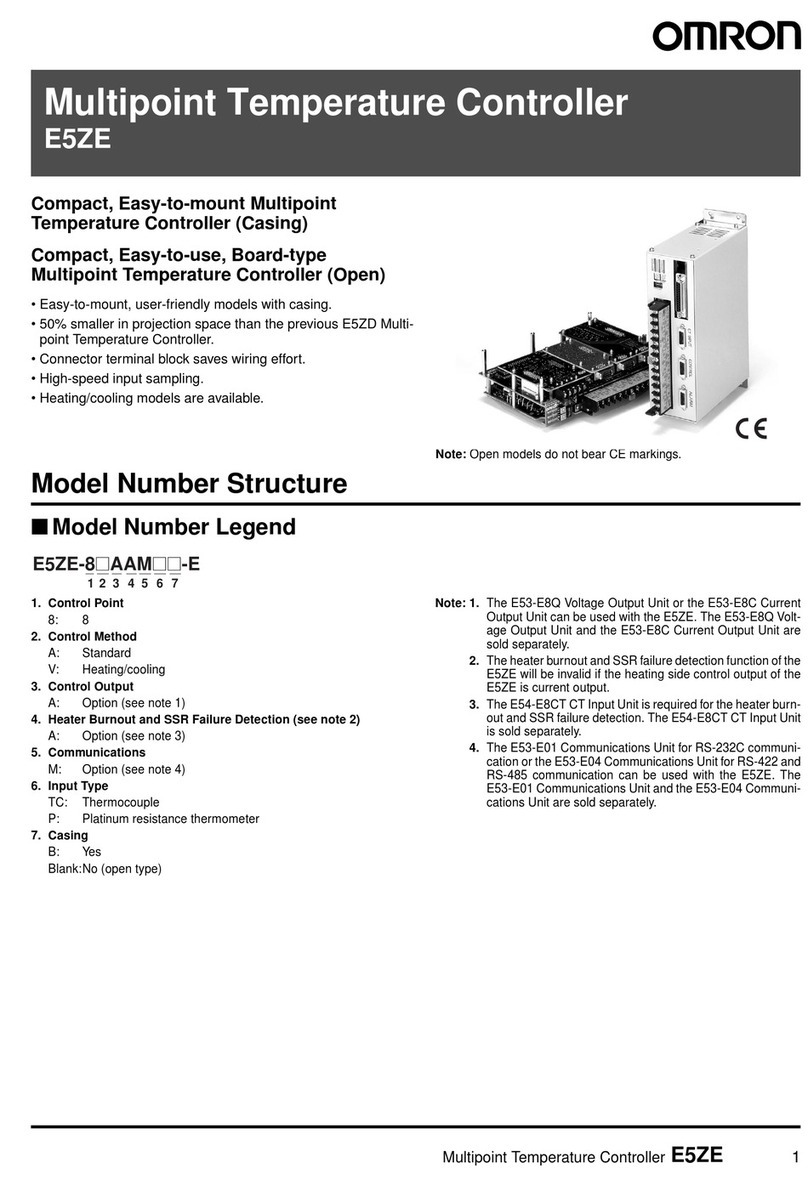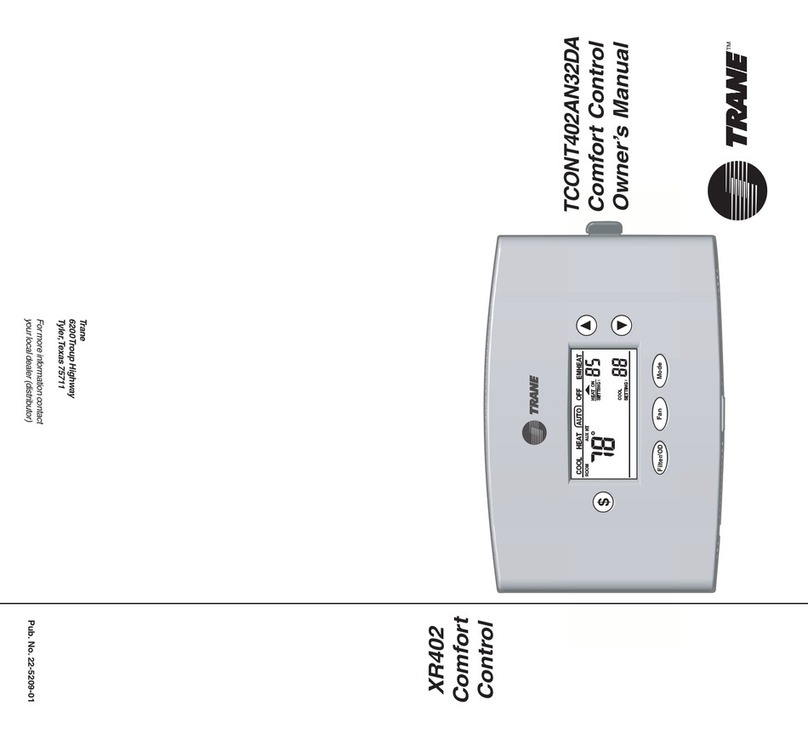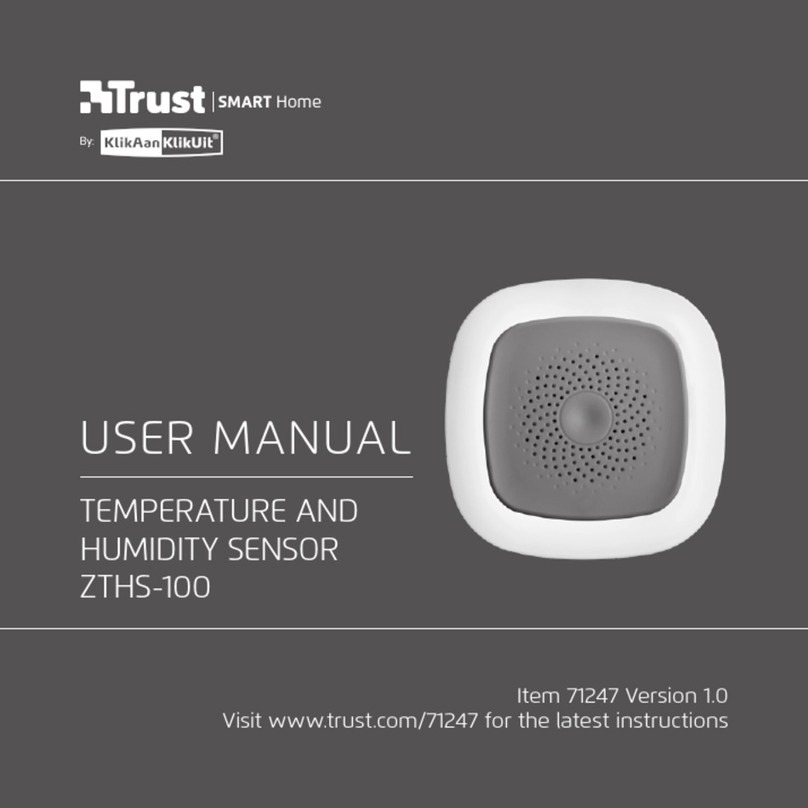netvox R718A User manual

Model:R718A
Wireless Temperature and Humidity Sensor for Low Temperature Environment
Wireless Temperature and Humidity Sensor
for Low Temperature Environment
R718A
User Manual
Copyright© Netvox Technology Co., Ltd.
This document contains proprietary technical information which is the property of
NETVOX Technology. It shall be maintained in strict confidence and shall not be
disclosed to other parties, in whole or in part, without written permission of NETVOX
Technology. The specifications are subject to change without prior notice

1
Table of Content
1. Introduction .......................................................................................................................2
2. Appearance ........................................................................................................................2
3. Main Features....................................................................................................................3
4. Set up Instruction...............................................................................................................4
5. Data Report........................................................................................................................5
6. Installation.........................................................................................................................9
7. Information about Battery Passivation............................................................................12
7.1 To determine whether a battery requires activation ................................................12
7.2 How to activate the battery......................................................................................12
8. Important Maintenance Instruction .................................................................................13

2
1. Introduction
R718A, mainly used to detect the temperature and humidity at low temperature environment such as the
freezer air. It collects data over LoRa network and sends it to devices to be shown, fully compatible with
LoRa protocol.
LoRa Wireless Technology:
LoRa is a wireless communication technology dedicated to long distance and low power consumption.
Compared with other communication methods, LoRa spread spectrum modulation method greatly
increases to expand the communication distance. Widely used in long-distance, low-data wireless
communications. For example, automatic meter reading, building automation equipment, wireless
security systems, industrial monitoring. Main features include small size, low power consumption,
transmission distance, anti-interference ability and so on.
LoRaWAN:
LoRaWAN uses LoRa technology to define end-to-end standard specifications to ensure interoperability
between devices and gateways from different manufacturers.
2. Appearance
Indicator
Function Key
Built-in temperature and humidity sensor

3
3. Main Features
⚫Compatible with LoRa protocol.
⚫2 x ER14505 AA lithium batteries (3.6V/ section)
⚫Capable to detect the ambient temperature and humidity
⚫Simple and easy installation
⚫IP rating IP65
⚫Compatible with LoRaWANTM Class A
⚫Frequency hopping spread spectrum
⚫Configuration parameters can be configured via a third-party software platform, data can be read and
alerts can be set via SMS text and email (optional)
⚫Applicable to third-party platforms: Actility/ThingPark, TTN, MyDevices/Cayenne
⚫Improved power management for longer battery life
⚫Battery Life:
⁻Please refer to web: http://www.netvox.com.tw/electric/electric_calc.html
⁻At this website, users can find battery life time for variety models at different configurations.
1. Actual range may vary depending on environment.
2. Battery life is determined by sensor reporting frequency and other variables.

4
4. Set up Instruction
On/Off
Power on
Insert batteries. (users may need a flat blade screwdriver to open)
Turn on
Press and hold the function key for 3 seconds till the green indicator flashes once.
Turn off
(Restore to factory setting)
Press and hold the function key for 5 seconds till green indicator flashes for 20
times.
Power off
Remove Batteries.
Note
1. Remove and insert the battery; the device is at off state by default.
2. On/off interval is suggested to be about 10 seconds to avoid the interference of
capacitor inductance and other energy storage components.
3. At 1st -5th second after power on, the device will be in engineering test mode.
Network Joining
Never joined the network
Turn on the device to search the network to join.
The green indicator stays on for 5 seconds: success
The green indicator remains off: fail
Had joined the network
(not at factory setting)
Turn on the device to search the previous network to join.
The green indicator stays on for 5 seconds: success
The green indicator remains off: fail
Function Key
Press and hold for 5 seconds
Restore to factory setting / Turn off
The green indicator flashes for 20 times: success
The green indicator remains off: fail
Press once
The device is in the network: green indicator flashes once and sends a report
The device is not in the network: green indicator remains off
Sleeping Mode
The device is on and in the
network
Sleeping period: Min Interval.
When the reportchange exceeds setting value or the state changes: send a data report
according to Min Interval.

5
Low Voltage Warning
Low Voltage
3.2V
5. Data Report
Data report configuration and sending period are as following:
Min Interval
(Unit:second)
Max Interval
(Unit:second)
Reportable Change
Current Change≥
Reportable Change
Current Change<
Reportable Change
The device will immediately send a version packet report along with an uplink packet including temperature,
humidity and battery voltage.
The device sends data in the default configuration before any configuration is done.
Default setting:
MaxTime : Max Interval = 15 min = 900s
MinTime : Min Interval = 15 min = 900s
BatteryChange: 0x01 (0.1V)
TemperatureChange:0x0064 (1℃)
HumidityChange:0x0064 (1%)
Note:
The device report interval will be programmed based on the default firmware which may vary.
The interval between two reports must be the minimum time.
Please refer Netvox LoRaWAN Application Command document and Netvox Lora Command Resolver
http://www.netvox.com.cn:8888/page/index to resolve uplink data.

6
Example of Report configuration
FPort:0x07
Bytes
1
1
Var(Fix =9 Bytes)
CmdID
DeviceType
NetvoxPayLoadData
CmdID–1 bytes
DeviceType–1 byte –Device Type of Device
NetvoxPayLoadData–var bytes (Max=9bytes)
(1)Command Configuration:
MinTime = 1min、MaxTime = 1min、BatteryChange = 0.1v、TemperatureChange = 1℃、
HumidityChange = 1%
Downlink:010B003C003C0100640064 003C(Hex) = 60(Dec), 64(Hex) = 100(Dec)
Response:
810B000000000000000000(Configuration success)
810B010000000000000000(Configuration failure)
(2)Read Configuration:
Downlink:020B000000000000000000
Response:
820B003C003C0100640064(Current configuration)
Any number between
1~65535
Any number between
1~65535
Can not be 0.
Report
per Min Interval
Report
per Max Interval
Description
Device
CmdID
Device
Type
NetvoxPayLoadData
Config
ReportReq
R718A
0x01
0x0B
MinTime
(2bytes Unit:s)
MaxTime
(2bytesUnit:s)
Battery
Change
(1byte
Unit:0.1v)
Temperature
Change
(2byte
Unit:0.01℃)
Humidity
Change
(2byte
Unit:0.01%)
Config
ReportRsp
0x81
Status
(0x00_success)
Reserved
(8Bytes,Fixed 0x00)
ReadConfig
ReportReq
0x02
Reserved
(9Bytes,Fixed 0x00)
ReadConfig
ReportRsp
0x82
MinTime
(2bytes Unit:s)
MaxTime
(2bytes Unit:s)
Battery
Change
(1byte
Unit:0.1v)
Temperature
Change
(2byte
Unit:0.01℃)
Humidity
Change
(2byte
Unit:0.01%)

7
Example for MinTime/MaxTime logic:
Example#1 based on MinTime = 1 Hour, MaxTime= 1 Hour, Reportable Change i.e.
BatteryVoltageChange=0.1V
MaxTime MaxTime
Sleeping(MinTime) Sleeping(MinTime)
Note: MaxTime=MinTime. Data will only be report according to MaxTime (MinTime) duration
regardless BatteryVoltageChange value.
Example#2 based on MinTime = 15 Minutes, MaxTime= 1 Hour, Reportable Change i.e.
BatteryVoltageChange= 0.1V.
MaxTime
Sleeping(MinTime) sleeping sleeping sleeping
0H 15th M 30th M 45th M 1H
Wakes up and
collects data
3.6V
Does not report
Wakes up and
collects data
3.6V
Does not report
Wakes up and
collects data
3.6V
Does not report
Wakes up and
collects data
REPORTS 3.6V
Wakes up and
collects data
REPORT 3.6V
Wake up and collects data
REPORTS 3.6V
Wakes up and collects data
REPORTS 3.6V
Wakes up and collects data
REPORTS 3.6V

8
Example#3 based on MinTime = 15 Minutes, MaxTime= 1 Hour, Reportable Change i.e.
BatteryVoltageChange= 0.1V.
MaxTime
sleeping sleeping ...
0H 15th M 30th M 45th M 1H 1H 10th M 1H 25th M
1H 40th M 1H 55th M 2H 10th M
Notes :
1) The device only wakes up and performs data sampling according to MinTime Interval. When it is
sleeping, it does not collect data.
2) The data collected is compared with the last data reported. If the data variation is greater than the
ReportableChange value, the device reports according to MinTime interval. If the data variation
is not greater than the last data reported, the device reports according to MaxTime interval.
3) We do not recommend to set the MinTime Interval value too low. If the MinTime Interval is too
low, the device wakes up frequently and the battery will be drained soon.
4) Whenever the device sends a report, no matter resulting from data variation, button pushed or
MaxTime interval, another cycle of MinTime/MaxTime calculation is started.
Wakes up and
collects data
REPORTS 3.6V
Wakes up and collects data
3.5V |3.5-3.6|=0.1
REPORTS 3.5V
Wakes up and
collects data
3.5V
Does not report
Wakes up and
collects data
3.5V
Does not report
Wakes up and
collects data
3.5V
Does not report
Wakes up and
collects data 3.5V
Does not report
Wakes up and
collects data
3.6V
Does not report
Users push the button,
REPORTS 3.5V.
Recalculate MaxTime.

9
6. Installation
1.The Wireless Temperature and Humidity
Sensor (R718A) has a built-in magnet (see Figure 1
below). When installed, it can be attached to the
surface of an object with iron which is convenient
and quick.
To make the installation more secure, use screws
(purchased) to secure the unit to a wall or other
surface (see Figure 2 below).
Note: Do not install the device in a metal shielded
box or in an environment with other electrical
equipment around it to avoid affecting the wireless
transmission of the device.
The figure shows the scene where the temperature
and humidity sensor (R718A) is applied in the
refrigerator.
It can also be applied to the following scenarios:
⚫Restaurant (refrigerator or freezer)
⚫Shopping mall supermarket (freezer)
⚫Engine room
⚫Environmental monitoring
⚫Smart city and intelligent building
⚫Storage and transportation of food and
medicine
⚫Flowers and other perishable foods
⚫Wall or logistics refrigerator
When it is necessary to detect temperature or
humidity.
2. When the temperature and humidity detected
by R718A is compared with the last reported
values, when the temperature change is exceeded
1°C (default) or the humidity
change is exceeded 1%(default),it will report
current values.
3. Installation height recommendation:1-2 m
4. Installation ambient temperature: -40C°~ 55°C
5. Installation direction recommendation: The
output port(sensor) is facing down, and the LOGO
is facing towards the person.

10
positive
Battery installation steps
Please replace the battery by a professional
The device must use 2 sections of ER14505 battery (3.6v/section)
Step 1
Unscrew the four corners of the device with a screwdriver, as shown in the red circle below.
Step 2
Put the batteries into the battery bay of the device and note the positive and negative poles of the
battery, please do not insert the battery reversely.
negative

11
Step 3
After inserting the batteries, put the lid back on and tighten the four screws.
Note:
Please do not disassemble the device unless it is required to replace the batteries.
Do not touch the waterproof gasket, LED indicator light, function keys when replacing the batteries.
Please use suitable screwdriver to tighten the screws (if using an electric screwdriver, it is
recommended to set the torque as 4kgf) to ensure the device is impermeable.

12
7. Information about Battery Passivation
Many of Netvox devices are powered by 3.6V ER14505 Li-SOCl2 (lithium-thionyl chloride) batteries
that offer many advantages including low self-discharge rate and high energy density.
However, primary lithium batteries like Li-SOCl2 batteries will form a passivation layer as a reaction
between the lithium anode and thionyl chloride if they are in storage for a long time or if the storage
temperature is too high. This lithium chloride layer prevents rapid self-discharge caused by continuous
reaction between lithium and thionyl chloride, but battery passivation may also lead to voltage delay
when the batteries are put into operation, and our devices may not work correctly in this situation.
As a result, please make sure to source batteries from reliable vendors, and the batteries should be
produced within the last three months.
If encountering the situation of battery passivation, users can activate the battery to eliminate the battery
hysteresis.
7.1 To determine whether a battery requires activation
Connect a new ER14505 battery to a 68ohm resistor in parallel, and check the voltage of the circuit.
If the voltage is below 3.3V, it means the battery requires activation.
7.2 How to activate the battery
a. Connect a battery to a 68ohm resistor in parallel
b. Keep the connection for 6~8 minutes
c. The voltage of the circuit should be ≧3.3V

13
8. Important Maintenance Instruction
Kindly pay attention to the following in order to achieve the best maintenance of the product:
•Keep the device dry. Rain, moisture, or any liquid, might contain minerals and thus corrode
electronic circuits. If the device gets wet, please dry it completely.
•Do not use or store the device in dusty or dirty environment. It might damage its detachable parts
and electronic components.
•Do not store the device under excessive heat condition. High temperature can shorten the life of
electronic devices, destroy batteries, and deform or melt some plastic parts.
•Do not store the device in places that are too cold. Otherwise, when the temperature rises to
normal temperature, moisture will form inside, which will destroy the board.
•Do not throw, knock or shake the device. Rough handling of equipment can destroy internal
circuit boards and delicate structures.
•Do not clean the device with strong chemicals, detergents or strong detergents.
•Do not apply the device with paint. Smudges might block in the device and affect the operation.
•Do not throw the battery into the fire, or the battery will explode. Damaged batteries may also
explode.
All of the above applies to your device, battery and accessories. If any device is not working properly,
please take it to the nearest authorized service facility for repair.
Other manuals for R718A
2
Table of contents
Other netvox Temperature Controllers manuals
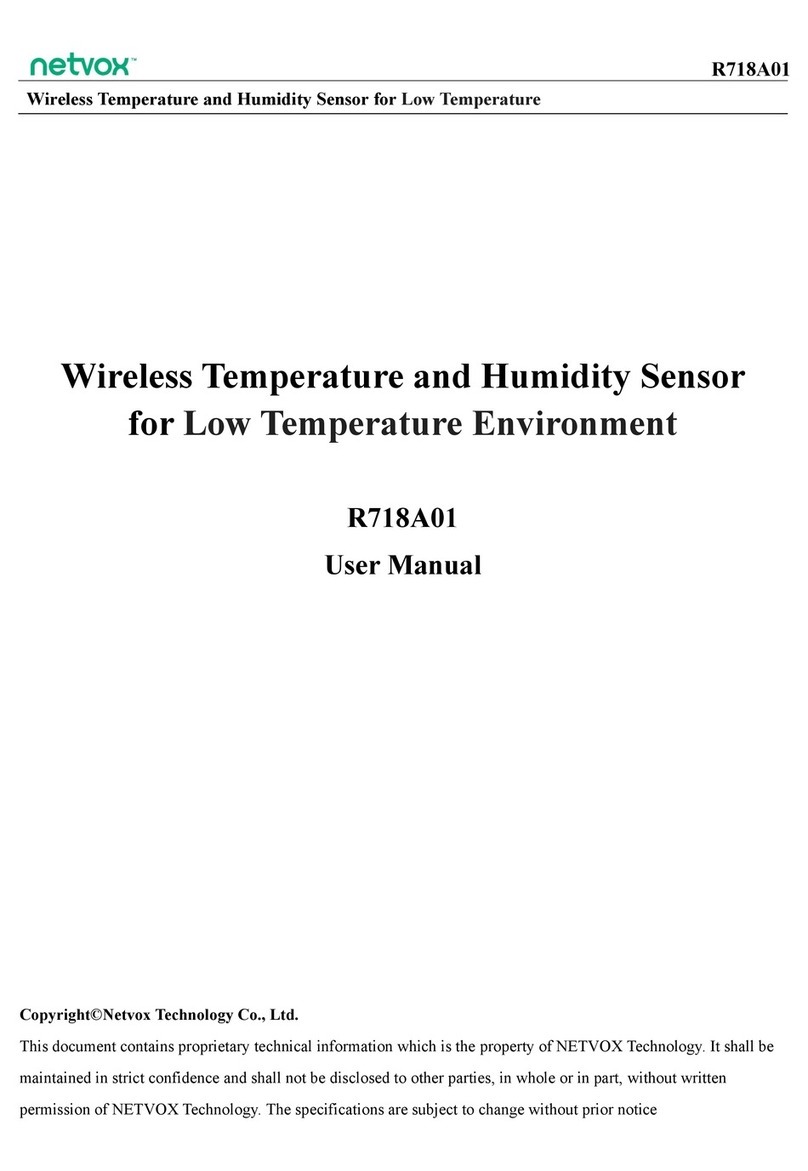
netvox
netvox R718A01 User manual
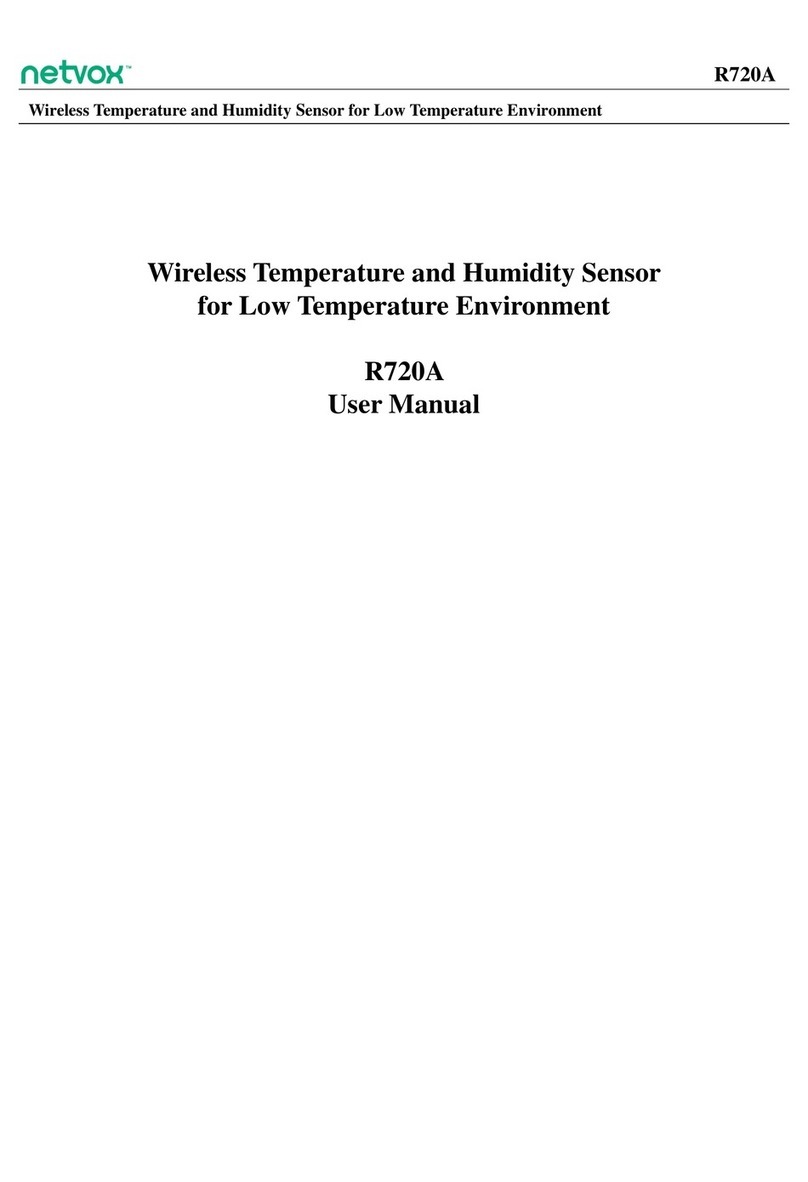
netvox
netvox R720A User manual
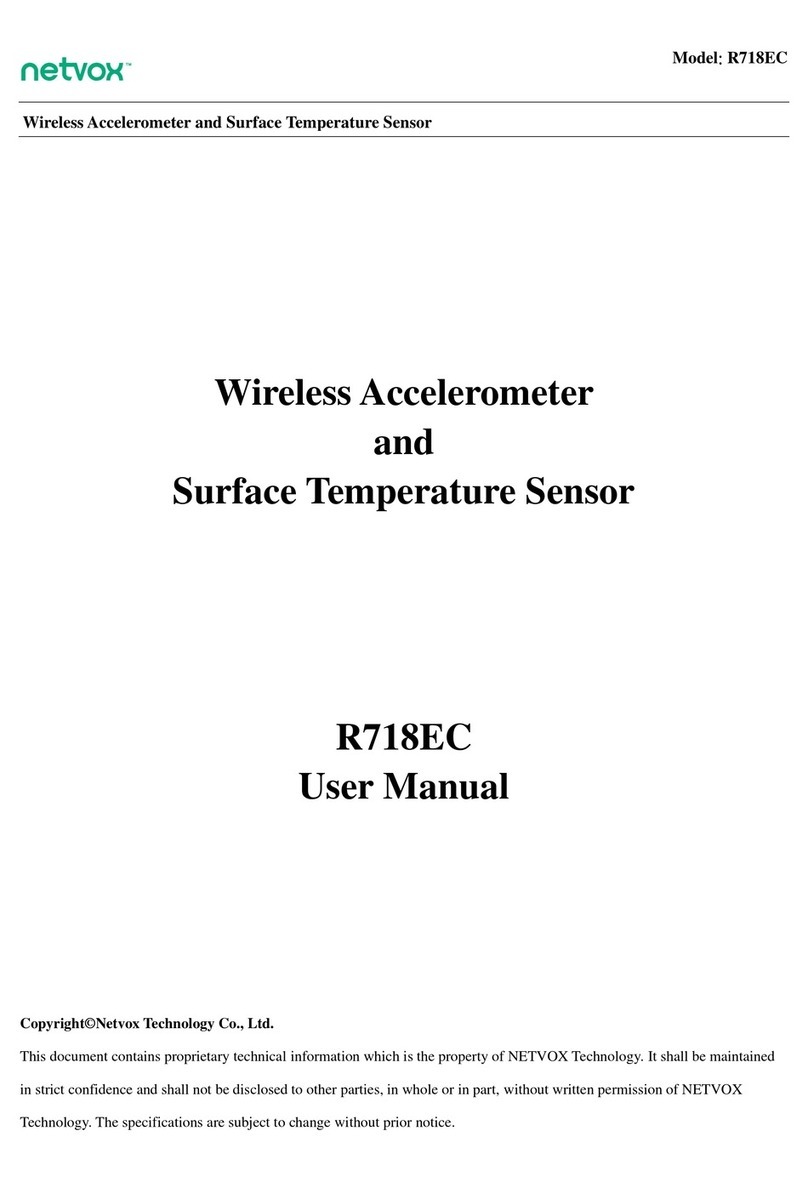
netvox
netvox R718EC User manual
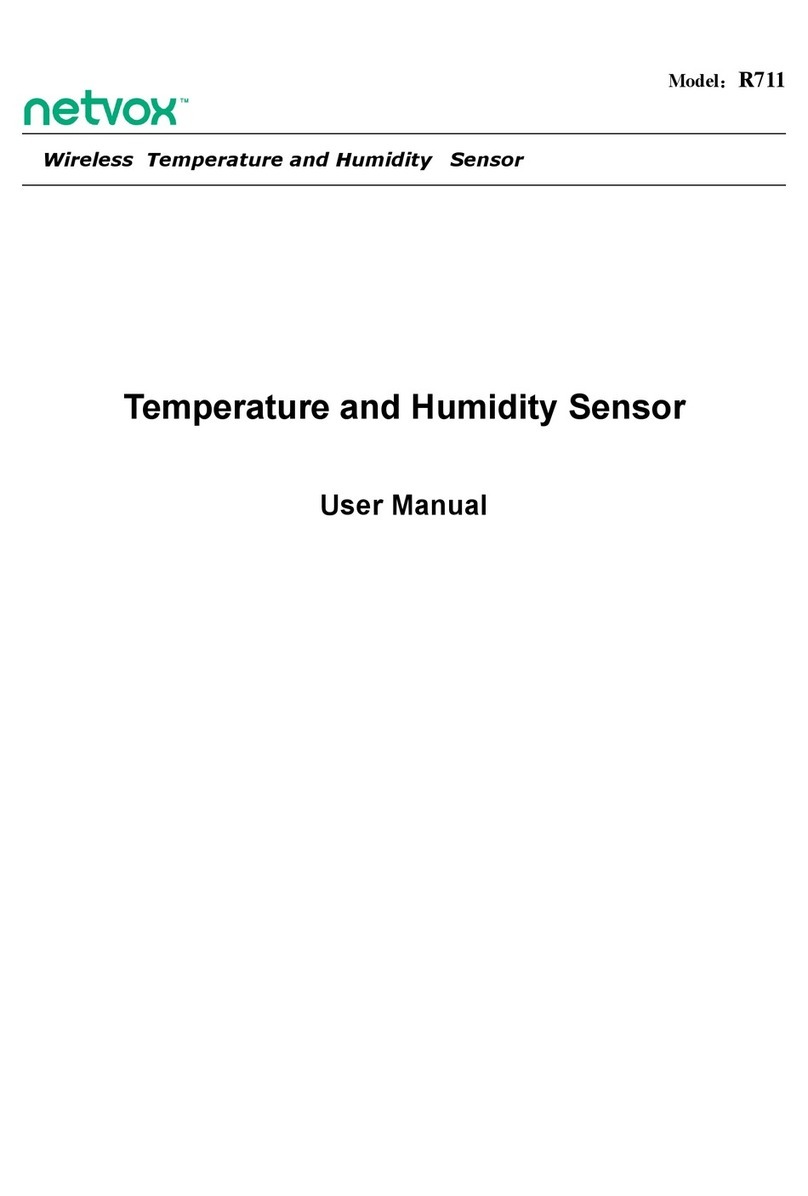
netvox
netvox R711 User manual

netvox
netvox R720C User manual
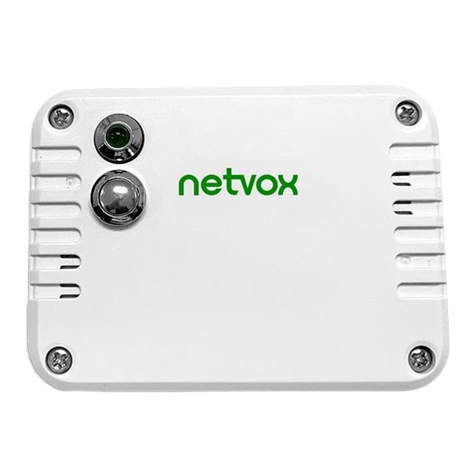
netvox
netvox R720E User manual
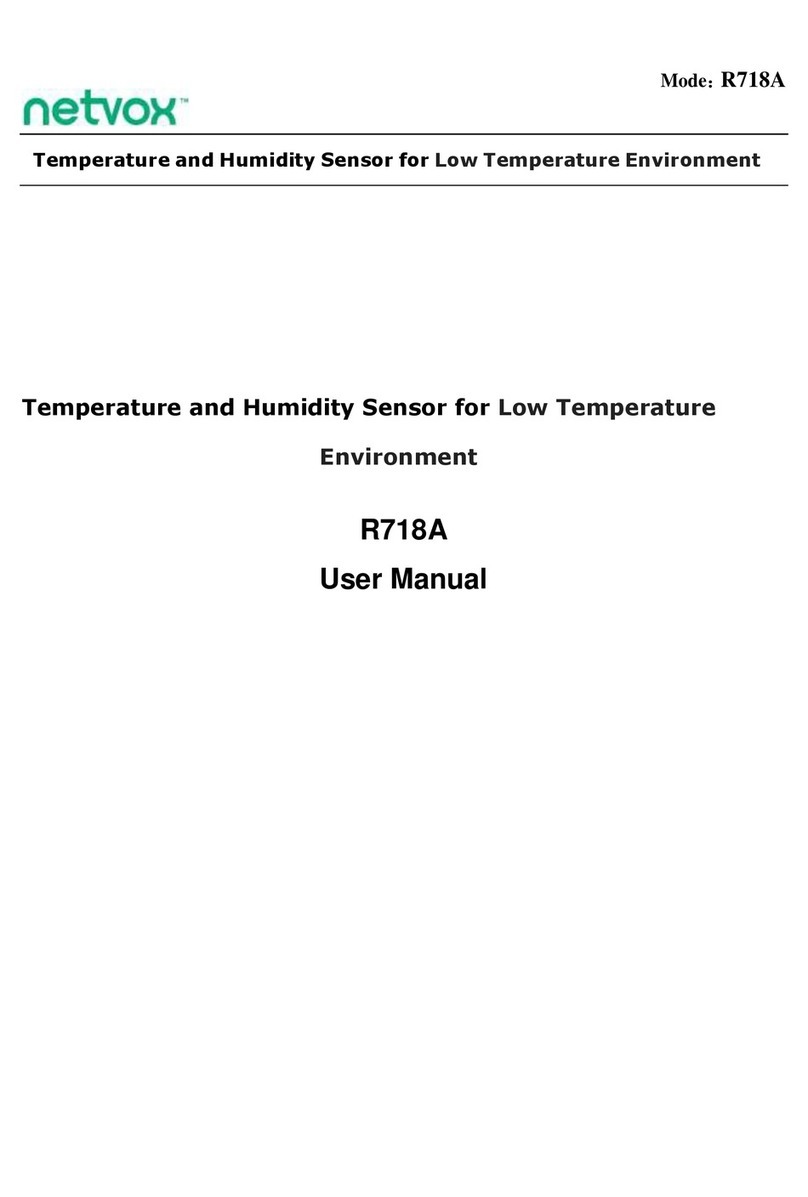
netvox
netvox R718A User manual
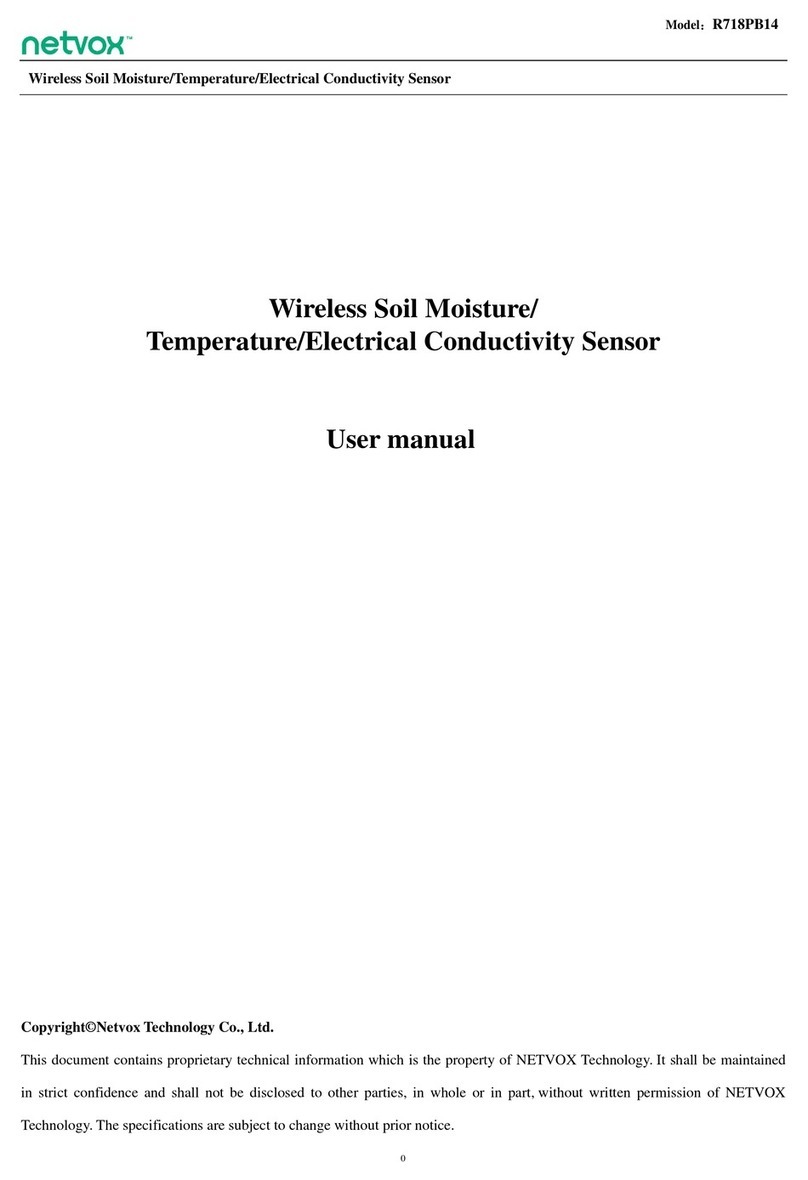
netvox
netvox R718PB14 User manual
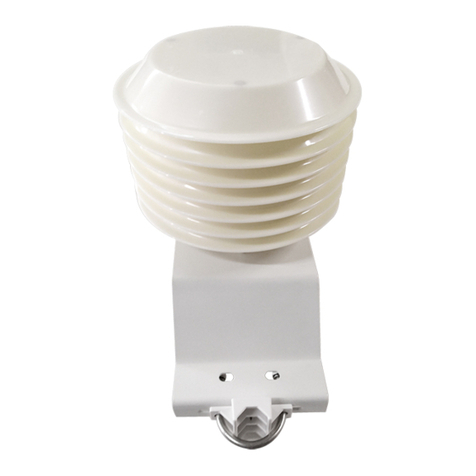
netvox
netvox RA0716 User manual
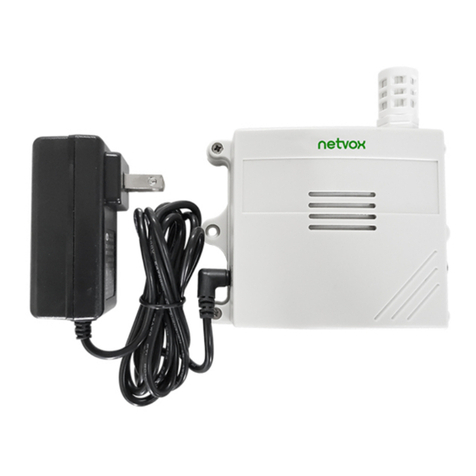
netvox
netvox RA0715 User manual
